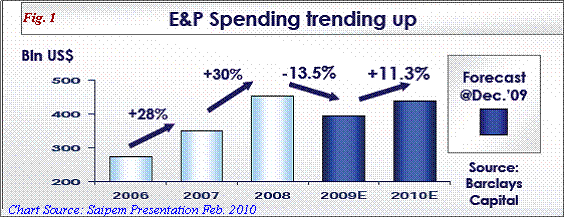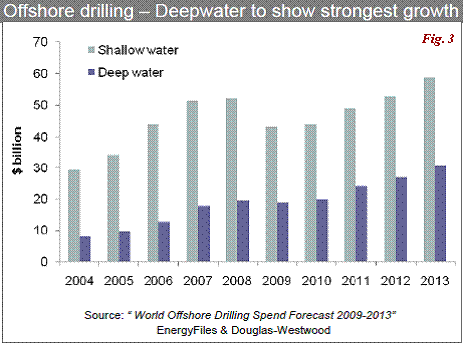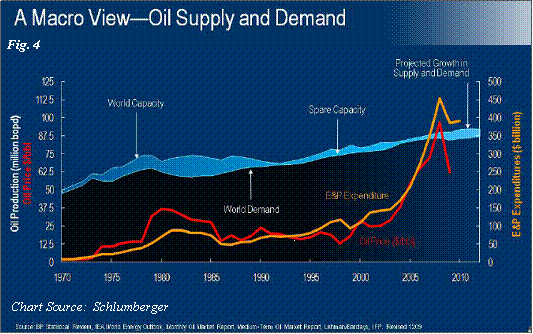Offshore Oil Companies Investing The Warren Buffett Way
Commodities / Oil Companies Feb 15, 2010 - 01:35 AM GMTBy: Dian_L_Chu
 Commodities, particularly crude, were trending down last week after China's Central Bank raised bank reserve requirements boosting the US dollar against other major currencies. That marks the second time China has raised its bank reserve requirement in a month.
Commodities, particularly crude, were trending down last week after China's Central Bank raised bank reserve requirements boosting the US dollar against other major currencies. That marks the second time China has raised its bank reserve requirement in a month.
Ongoing worries about the economy stemming from European debt problems, specifically the lack of a firm Greek bailout plan from European leaders also prompted investors moving out of risky assets. Crude oil fell for the first day in five to below $75 a barrel also partly due to government data showing U.S. inventories rose more than forecast.
Meanwhile U.S. natural gas registered the largest one-day gain last Friday to $5.48 per mmbtu since the beginning of the month on a drop in jobless claims, signaling industrial demand is likely improving, and cold temperatures across the US are boosting residential demand. Industrial Demand accounts for 29% of U.S. consumption.
Oil Services Sector Bottoming Out
While the markets are in a finicky mood from the China and Greek factors, the return of relative stability in oil and natural gas prices has spurred producers to increase their capital budget and restart projects they slowed down or completely deferred a year ago. (Fig. 1)

Absorbing the impact of lower rig counts, weak global demand for fossil fuel and volatile energy prices, the majority of the oil services companies are reporting sharply lower earnings in Q1. However, the rising rig count and producers’ capital budget suggest that oil service markets are probably in the process of bottoming this year, which suggests a good entry point for long-term investors. (Fig. 2)

Oil Majors Go Deepwater & Subsea
Roughly from 2004 to 2008, the onshore, North America in particular, had outshined the offshore in terms of activity growth. But the Great Recession has shifted the tide towards offshore and international. Offshore is one of the few remaining places where the state as well as western oil majors can increase production, while emerging Asian demand is expected to outpace the U.S. and the OECD in coming years.
FBR estimates an increase in deepwater spending of almost triple expected growth in onshore spending will drive offshore spending overall at a rate of around 15% for the next few years. Energy consultants Douglas-Westwood also forecast offshore spending recovering to $439 billion in 2010, up 11% from 2009 with deepwater capital expenditure reaching new highs. (Fig. 3) South America, Mexico, Iraq, Russia, Africa, and the deepwater are the key areas.

Subsea has proven to be considerably more resilient in the downturn, and the secular growth story will continue to improve as the deepwater rig count is expected to increase by 30% in 2012 from 2009 and as projects get more complex and require greater amounts of equipment.
Offshore Infrastructure – The Buffett Way
Warren Buffett made headline last year when he placed the biggest bet of his life with the $34 billion purchase of Burlington North Santa Fe, expecting the infrastructure play will grow as the economy gets back on solid ground.
So, if we apply the same investment strategy as Buffett to the oil services sector, offshore infrastructure will be the logical choice.
Americans vs. Europeans
While oil companies typically fund and own the pipeline, platform, etc, they rely on oil services companies to provide project expertise and resources.
The oil services universe is made up of mainly two camps: Americans and Europeans. American firms such as Halliburton (HAL), Baker Hughes (BHI) and Weatherford (WFT) tend to have a stronger focus on drilling and production services mainly due to the existence of a vast American market, and higher margins.
The European firms, on the other hand, have essentially positioned as specialists in offshore drilling, infrastructure engineering and construction related services.
From Europe with Backlog
Therefore, the current offshore and deepwater trend bodes well for the major European service companies such as Saipem SpA and Technip SA (TKP). Theses two companies are leaders of the European pack dominating in high-tech segments for deepwater activities such as the installation of platforms, the laying of subsea pipelines, the development of subsea fields, etc.,
The oil infrastructure business is generally later cycle and backlog driven, and thus tends to have less volatility in earnings than other energy stocks. That means even if we go into a double dip, these stocks should still be able to generate higher earnings.
Favorable Forex Trend
Dollar appreciation is also a major catalyst. Société Générale estimated that a 10% increase in the dollar translates into an 8% to 10% increase in EBIT for the oil services sector. All oil services companies should benefit but those that combine a sizeable proportion of dollar-based assets with borrowing denominated essentially in euros, for instance, Saipem and Technip (TKP), stand to benefit most.
Furthermore, with euro recently plunging to a near nine-month low amid Greek concerns, the downward momentum is favorable for U.S. investors wishing to add positions in some solid European companies with good long term prospects.
Americans with Niche
All is not lost with the American companies. Large manufacturers of capital equipment such as Cameron (CAM) are poised to benefit as well, since the tender activity for deepwater rigs, subsea equipment, surface, valves and compression will likely accelerate in 2010 with oil companies gaining confidence in the commodity recovery.
Drillers & Seismic – Grinding Ahead
Nevertheless, all services are not created equal. Average day rates for deepwater floating rigs have fallen from up to $550,000 to $350,000. So, the next two years are going to be a grinding period for drillers like Transocean (RIG) and Diamond Offshore (DO) when they have to roll over old contracts at lower rates.
Meanwhile, seismic companies such as CGG Veritas (CGV) and Petroleum Geo-Services (PGS) are still struggling to find a bottom mainly due to vessel overcapacity on the marine side. The sector is also hammered by clients’ preference to use old data instead of shooting new ones in a bid to cut costs.
So, the downward earnings trajectory could signal a buying and/or shorting opportunity depending on investment time frame and strategy.
Oil or Gas, One Sector Does It All
Energy stocks, including shares of services companies, tend to be higher beta, so the sector still has to balance the downside risk of the global growth environment. But as the world journeys on a recovery path, likely with rising oil and gas demand, there is still a significant multi-year opportunity for earnings growth from the oil macro view. (Fig. 4)

In addition, oil services is one sector that stands to benefit from the expected uptrend of either crude or natural gas, or both. With crude and natural gas prices outlook remain diverged in the medium term, this unique characteristic could be a good hedge in any energy/commodities investment portfolio.
Disclosure: No Positions
Dian L. Chu, M.B.A., C.P.M. and Chartered Economist, is a market analyst and financial writer regularly contributing to Seeking Alpha, Zero Hedge, and other major investment websites. Ms. Chu has been syndicated to Reuters, USA Today, NPR, and BusinessWeek. She blogs at Economic Forecasts & Opinions.
© 2010 Copyright Dian L. Chu - All Rights Reserved Disclaimer: The above is a matter of opinion provided for general information purposes only and is not intended as investment advice. Information and analysis above are derived from sources and utilising methods believed to be reliable, but we cannot accept responsibility for any losses you may incur as a result of this analysis. Individuals should consult with their personal financial advisors.
© 2005-2022 http://www.MarketOracle.co.uk - The Market Oracle is a FREE Daily Financial Markets Analysis & Forecasting online publication.



